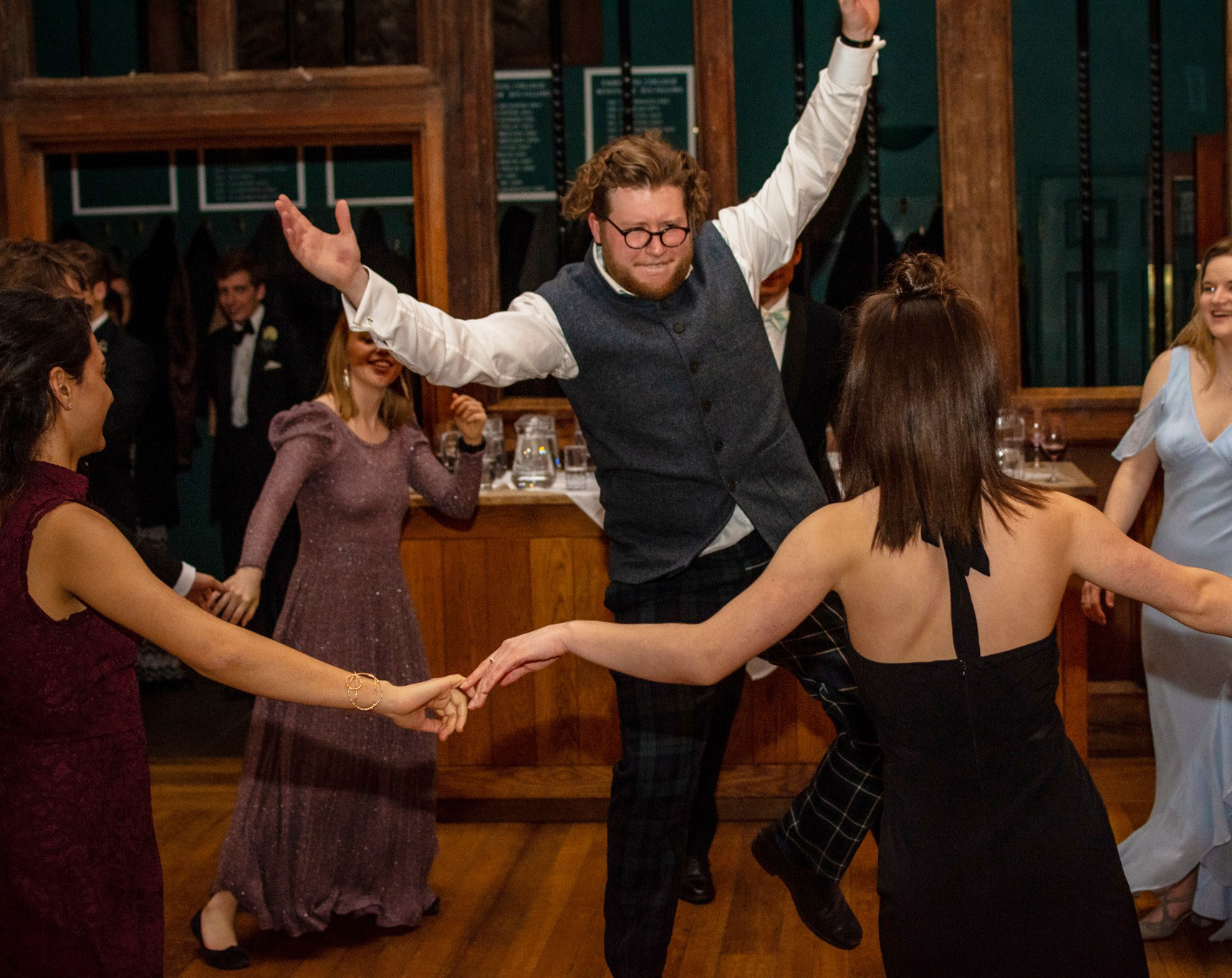Introduction
Scottish country dancing has its origins in a combination of traditional Highland folk dancing with other British country and court dance forms, including English country dancing, court dancing, and Irish set dancing. It was developed over the course of the 18th century at balls hosted by Scottish aristocrats and lairds. Reeling is one of the three styles of Scottish country dancing, alongside the more formal RSCDS and the more casual cèilidh, which you might have come across before at weddings and parties. Reeling is the most traditional of these three styles, and we think the most fun!
Although RSCDS might offer more refinement, there are also over 100 different dances one might be expected to learn, while cèilidh, at the other end of the spectrum, relies on a caller and a very small number of simple rough-and-ready dances, and is usually only practiced at parties. Reeling – as it is commonly known, even though it incorporates reels, jigs and other rhythms – offers a happy medium between the two, with a core of about ten rather rumbustious dances which, once you have mastered the basics, open the doors for you to attend any reeling ball in the United Kingdom and beyond.
Any fears of a decline in reeling have now been firmly dispelled, and today reeling is popular not just in Scotland, but around the world, with many towns, cities and universities in the UK and across the Commonwealth now having Caledonian societies and hosting reeling balls. The opportunities to have fun are endless!
Cheat Sheet
Even the most seasoned reelers amongst us could sometimes use with a quick reminder of a dance or two during a ball :- the more keened-eyed amongst you may notice the committee pull out little booklets during practices to do just that! You can either make or buy your own.
If you’d like to buy a pre-made booklet, we recommend Lily Hextall’s “Wee Book of Reels”. Lily is the former president of Edinburgh University Reeling Club. These often sell out quick so if they’re available and you want one - get on it!
Alternatively, if you’re feeling crafty and have access to a printer, you can make your own. Simply print off our “Compact Guide to Scottish Reels” made by our former practice manager, David Khachaturov. When printing, make sure you set the scale to 100% and use A4 paper. Cut and fold it according to these instructions and you’ve just made yourself a rather useful little guide!
The Basics
But what, you might ask, does reeling actually look like? In most reels, dancers form pairs, known as couples, traditionally with a male part and a female part, and each couple then forms part of a set with between one and five other couples, with the partners in each couple facing each other. Some reels, however, are danced ‘Aberdonian style’, in one long line of couples. Each reel has a sequence of moves danced by the so-called ‘dancing couple’ with the other couples. This sequence varies between reels, but expect a lot of clapping, stamping and spinning! At the end of this sequence, a new couple becomes the dancing couple, and so over the course of reel, each couple in the set should have the opportunity to be the dancing couple.
Within the sequence of moves that make up the various reels, there are a few essentials it might be useful with which to get familiar first. These are setting, turning (including the overhead and Tulloch turns), and the figure of eight (or reel of three). Each of these are explained and demonstrated in this tutorial kindly provided by London Reels:
The Dances
The most common dances found at reeling balls and other Caledonian events, and so those we routinely teach at the Cambridge Caledonian Society, are:
- The Dashing White Sergeant
- The Eightsome Reel
- The Foursome Reel
- The Reel of the 51st Highland Division
- Hamilton House
- The Duke of Perth
- Inverness Country Dance
- The Duke & Duchess of Edinburgh
- Mairi’s Wedding
We also teach some slightly more esoteric, but by no means rare, reels:
If you click on any of these dances, it will take you to a page with a description of the reel, brief notes on the key movements, and more excellent London Reels tutorials.
